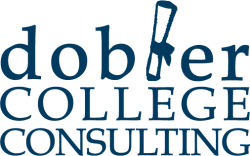Must Have Items On Your College List – Part II
Two weeks ago, I talked about how to build a great college list and then last week I introduced the first four of eight “must-haves” you should consider when creating a college list. Today, in Part II, I’m going to cover types of admission, chance of admission, graduation rates and cost.
Types of admission
There are several types of admission and how much you love a school will often dictate how you end up applying. Here’s a rundown of the major types of admission to consider:
1. Regular decision is the process by which you apply by each college’s published deadlines. By doing so, you will receive an admissions decision by April 1st though there is no obligation to commit until the May 1st response deadline.
2. Early decision, also known as ED is where you can apply early and receive your decision early – typically by mid-December. The price for this early decision is that you commit to attending the college and agree to withdraw all other applications. You can only apply ED to one school and, since this is a binding acceptance, you better know that this school is the right one for you on all fronts.
3. Early action, or EA, also allows you to apply early though, unlike with ED, you are under no obligation to accept the offer of admission. You can submit other applications, wait for their responses and then make a decision by May 1st. Essentially, you can play the field. There are variations of EA policies, so be sure to check with each school individually on their restrictions.
4. Rolling admissions is where students are admitted on a regular, or rolling, basis. The schools will make decisions until they have met their requirements for the new freshman class.
We’ll talk more about these different types of admission in a week or two.
Chance of admission
It’s important to get a feel for your chance of admission so that you have appropriate expectations about each school before you add it to you list.
That’s right. BEFORE.
Do your research by using websites like the College Board’s Big Future to understand whether or not you are a competitive applicant when compared to students who have previously been admitted. You know Harvard and Yale are a reach for just about everyone, but do you know if Quinnipiac is a reach? By selecting the SAT & ACT Scores tab on the Applying section, you would see that the middle 50% of admitted and enrolled students score within 520-590 on the Critical Reading, 540-610 on the MATH and 540-610 on the Writing. Under the Academics tab, you can compare your high school courses against the courses Quinnipiac expects to see from its applicants. Now, where do you stack up and what do you think of your chances?
Graduation rates
College is supposed to be the best four years of your life, right? Well, for the most part, graduation rates are actually quoted for six years instead of four. So, if you’re planning a budget based on four years’ worth of tuition and fees, you want to know that the schools you are adding to your college list can actually help you accomplish this. Want to know the four, five or six-year graduation rates for Boston College? You can find them at College Results Online. Want to know how Boston College’s peer institutions fare in the graduation rate category? You can find that information by simply clicking on the Similar Colleges tab.
Cost
There’s a lot to say about cost and the factors that go into it, but for today I want to talk about understanding that the price in the window, is not necessarily the price you end up paying.
Tuition and fees have risen over 400% since the early 80’s. But like everything in your college search, doing some homework ahead of time can really help.
What’s important to understand is that a lot of schools discount their tuition– especially private schools. This adjusted cost is called net price and it can, and will, be different for families based on the qualifications of each applicant, how much money a school typically throws at its new students and your EFC. EFC stands for “Expected Family Contribution” and it is the amount a college will expect you to contribute towards your cost. The higher your EFC, the more you will be expected to contribute and the less aid you can expect to receive. Since last fall, colleges have been required to host net price calculators somewhere on their website. You can use the calculators to enter your personal information and get an idea of what the net price might be for you.
The calculators are far from perfect, but if a school’s cost is going to be too much for you, it’s always better to be disappointed before you apply rather than after you have been accepted.
If you have any questions about building a great college list, please use the comment box below – I would love to hear from you!
You can also email me directly at eric@doblercollegeconsulting.com.
